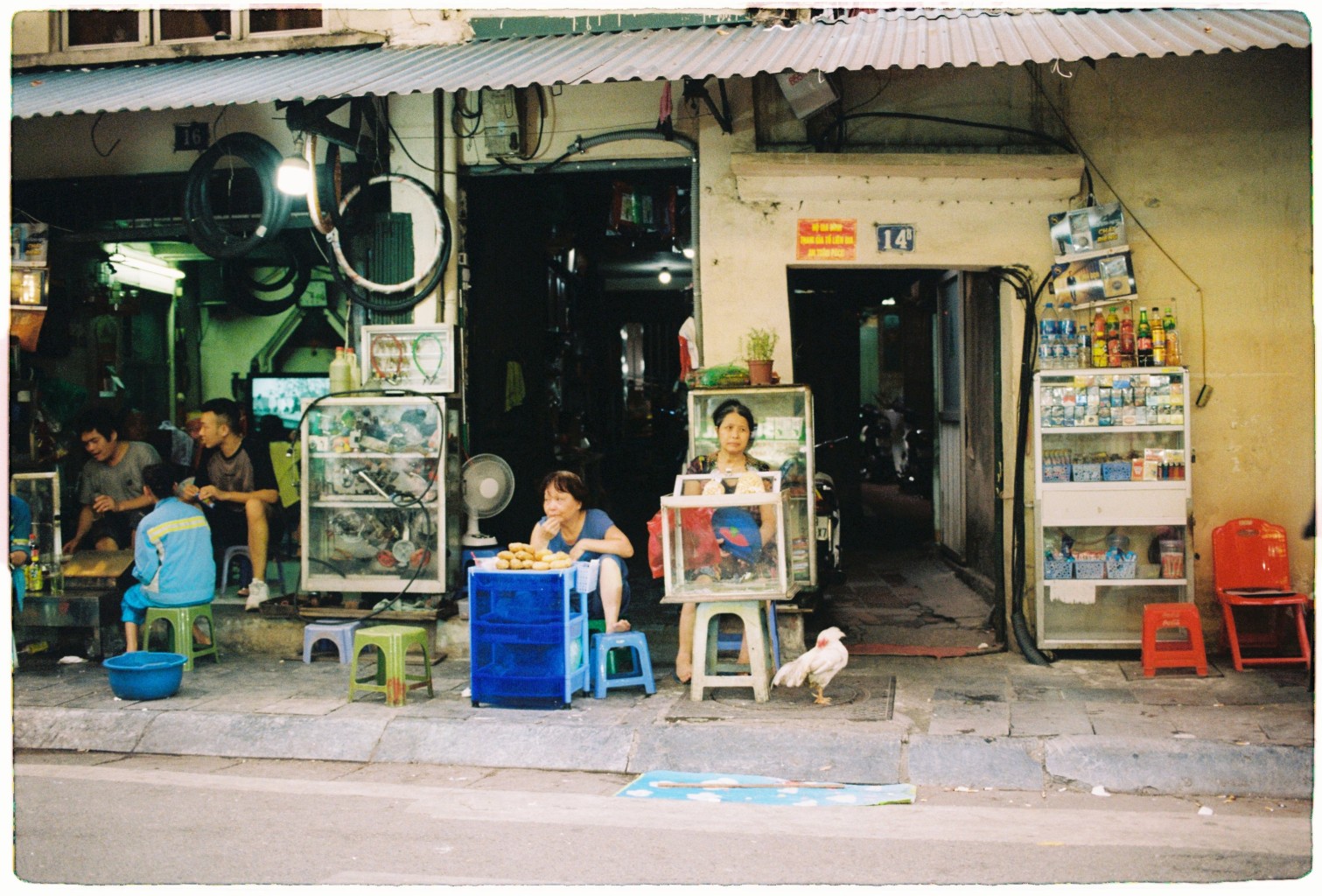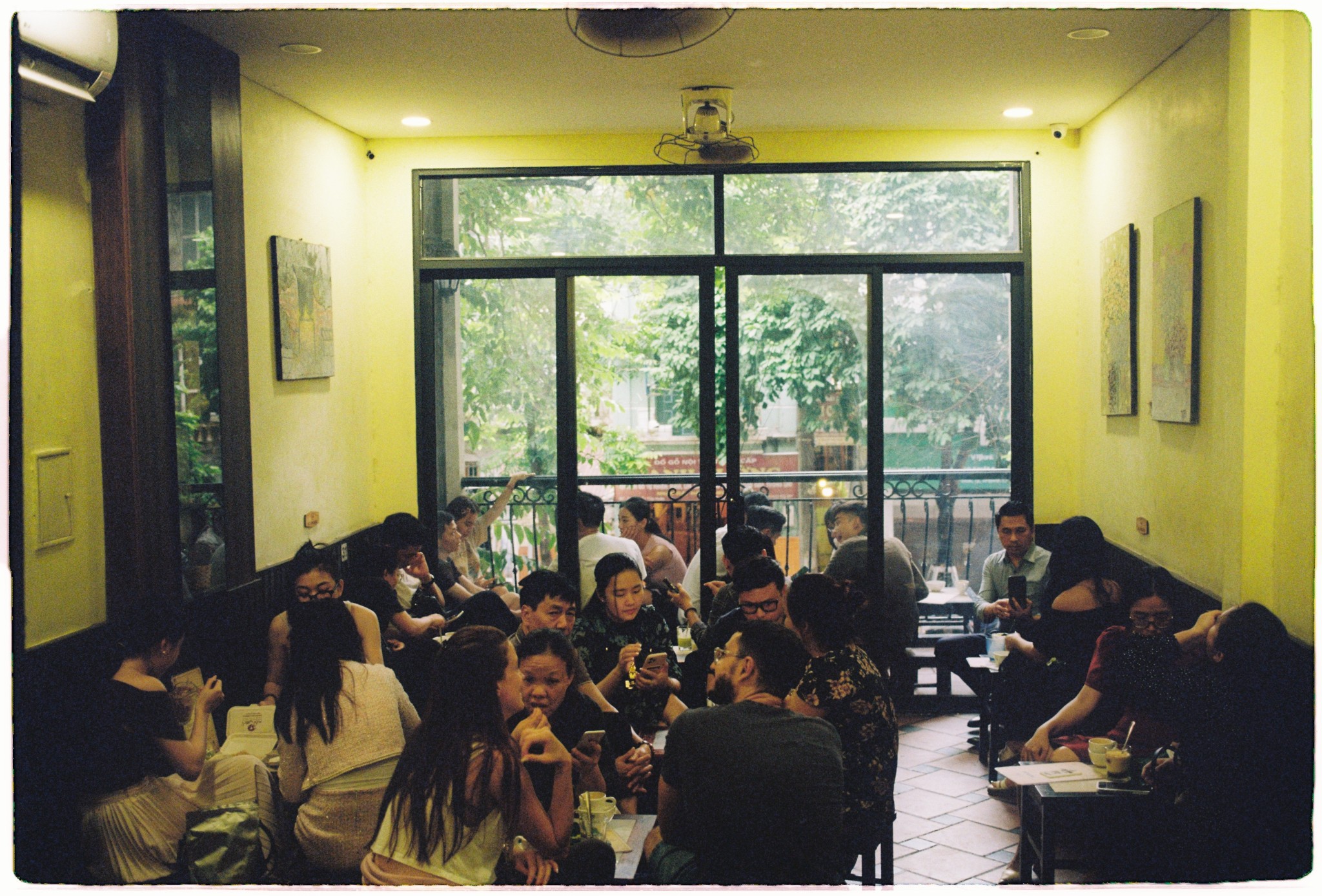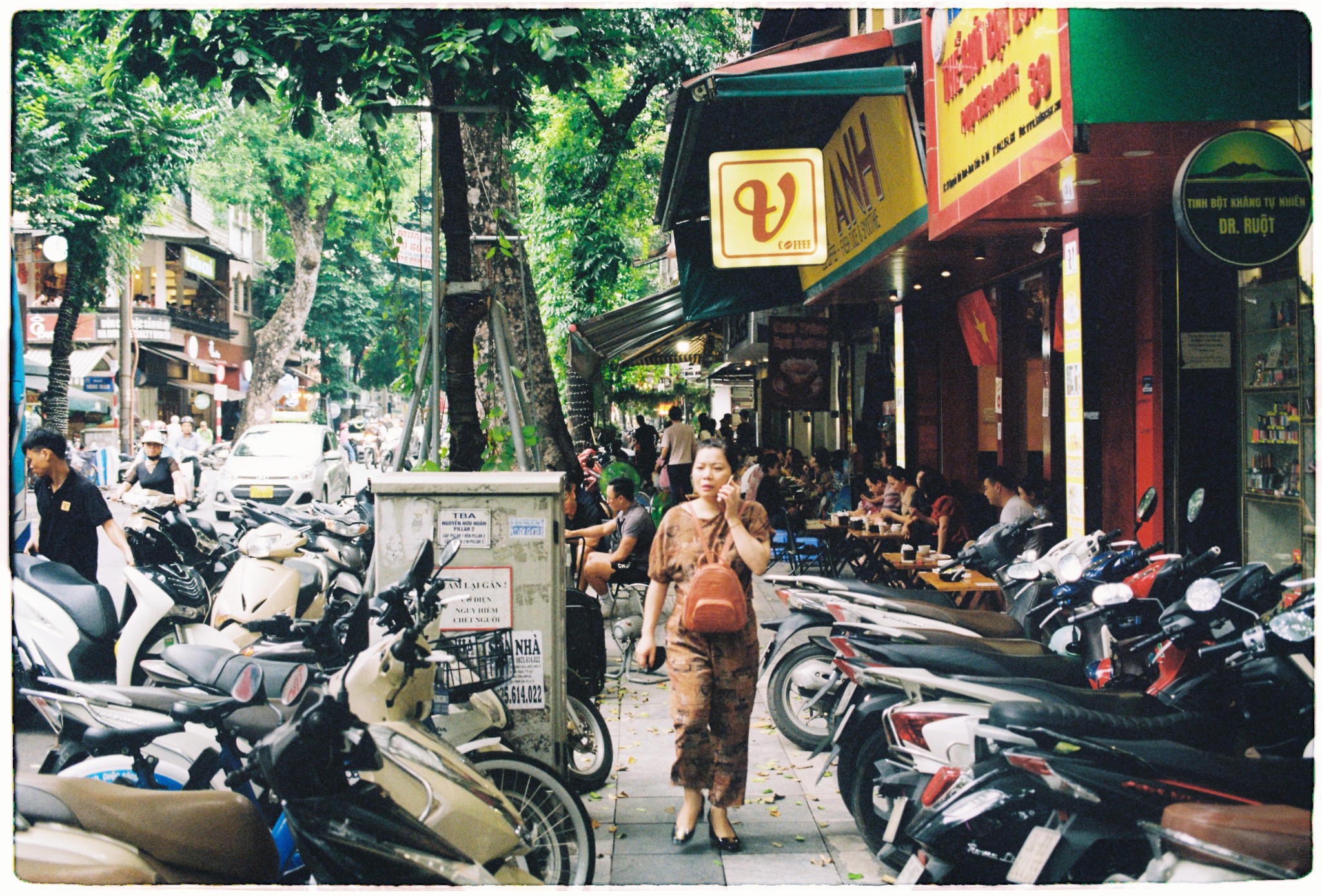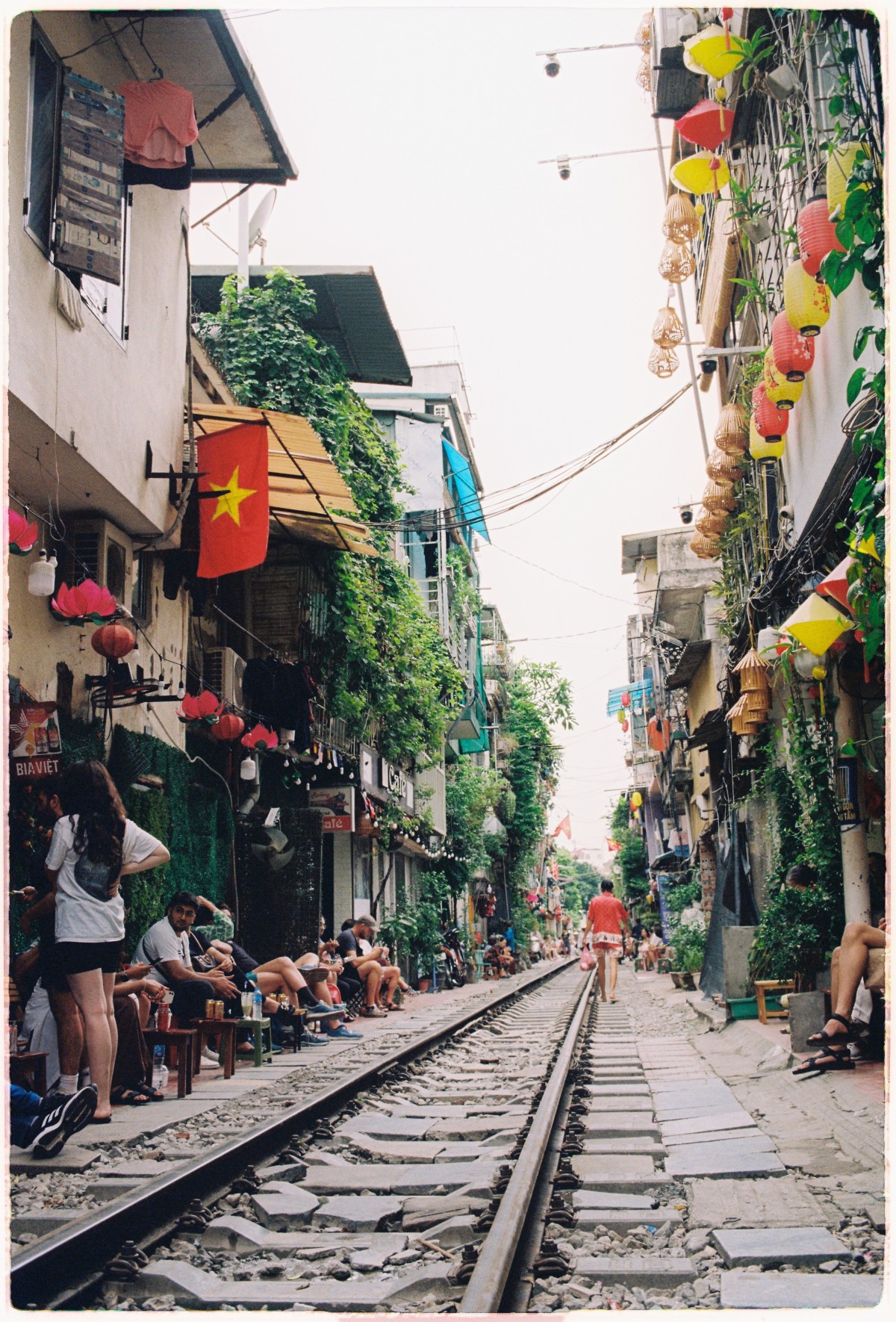Hanoi is the densely populated capital of Vietnam, located in the northern part of the country. I spent a week there last September, enjoying the (very) warm weather, delicious food and photographing things I found interesting.
Home to 8 million people
Coming from a country with less people in the whole country than in Hanoi, I was really excited to see what kind of city Hanoi would turn out to be. I have been to some really big cities before as well, but it was my first time visiting Southeast Asia. I got invited to my friend's wedding, so it was a good opportunity to take some time off to escape the looming coldness of autumn and extend summer's warmth a bit more.
Camera choice
As with any trip, I probably spend way too much time thinking which camera(s) to bring with me (🙋♂️ if you find yourself in this description). This time I wanted to keep it simple and get reliable results in varying conditions, so I decided to go with my Canon EOS 30, a couple lenses and a small flash. I settled on two: 40mm f2.8 as a lightweight walkaround lens, and 24-70mm f2.8 for the wedding day, when the weight and the size will be no issue, as I won't be moving around that much. This combo turned out to be a great choice.
Arriving in Hanoi
After some long flights and a transit in Doha, I finally arrived at Noi Bai International Airport. From the airport you can take a bus to the center (€0.35 / 50 min), or grab a taxi (€10 / 30 min). Being used to the high taxi prices in Finland, even though much more expensive than public transportation, it does feel pretty affordable there. Especially if you can split it with someone. After grabbing a delightfully cheap sim card (I forgot how much it was, but very affordable), I took a taxi with my friend to city center.

First impression: the traffic is crazy! Going from the airport to the city center in a taxi, you can see other cars and endless amount of scooters whizzing by. Some people wear helmets, but a lot of times it's some guys in shorts and sandals sharing the same ride. I even saw some businesswomen riding in their formal attire and high heels. I feel like rules must be more like general guidelines there. 😅
Okay, let's take some photos - I guess?
For the first evening, I don't think I took many photos. I remember feeling overwhelmed by the amount of things happening around me. People everywhere, honking horns in scooters, everyone going different directions. People going with the traffic, people going against the traffic, pedestrians walking on the side of the road. A fruit vendor in the corner, young people sitting inside a cafe opening to the street. The transition from Helsinki, where you really have to know where (and when) to go to find some people, to an abundance of life on the streets felt like going to a whole another world.


I was staying in the Old Quarter, the historical residential, manufacturing and commercial district of Hanoi. Another name for the area is the 36 streets, which refers to how each street used to be a place for selling certain crafts or doing business: Silver Street, Bucket Street, Bamboo Street, Sugar Street... Some of the streets still have vendors sell things related to the name, while others are completely different. It was fun walking around and seeing if the name corresponds to at all to what it used to refer to. You can find names and descriptions of all the streets here.











Hanoi café culture
Vietnamese coffee is quite famous, and I visited some cafés while in Hanoi. One interesting specialty is egg coffee. It's is made by beating egg yolks with sugar and condensed milk, then extracting the coffee into the cup, followed by a similar amount of egg cream, or egg yolks which are heated and beaten, or whisked. Egg coffee supposedly originates from Café Giảng in the 1940s - invented because there was milk shortage, and thus milk was replaced with eggs in making the foam. I visited the original shop, which is located in a narrow building the Old Quarter.



Hanoi Train street
Hanoi train street is a famous tourist attraction, and I totally get it: train tracks going right next to buildings, where people live and have cafés, is a sight and experience that is not found in many places. You can't just go the train tracks, but there are people who guide you to a seat in a café, so you can sit and wait for the train. It's a business, but also necessary for safety, as the train really goes really close by.




Streetphotographer's heaven?
To me maybe the most interesting part of Hanoi is just how lively everything is. There are so many things happening on the streets, everyone doing something. There might be a shop repairing phones, while some old ladies chop meat right next to it, using a cardboard box as a table. Tourists, locals, salespeople, businessmen... everyone sharing the same urban space and moving along the narrow allies like ants in their endless tunnels.
In Finland I often feel like you really have to look to find something interesting to photograph (this is especially true in the dark winter months...), but there I felt it's almost enough that you just point your camera in any direction, and surely something interesting will happen.
Of course, in a new environment, everything looks interesting. But that's one thing why travelling to a new place is so much fun as a photographer. It keeps things fresh, and when you come back home, you just might see familiar things from a new perspective.
Next entry will be a focus on night life, so please look forward to it!
